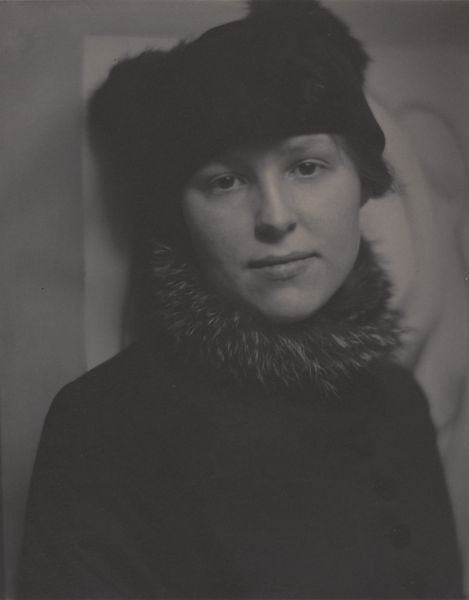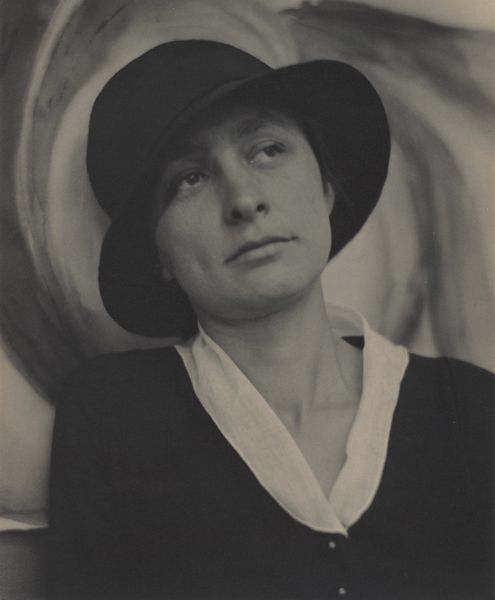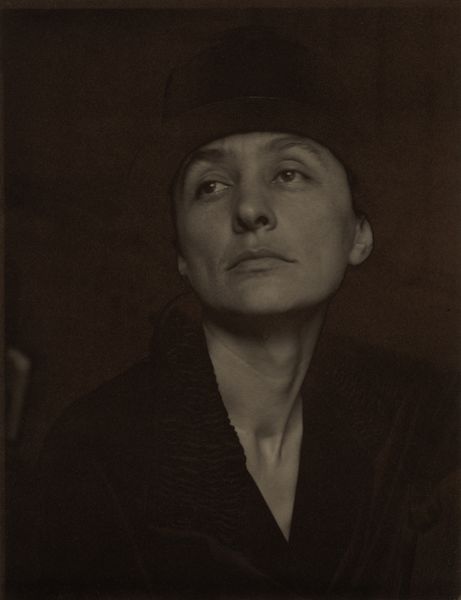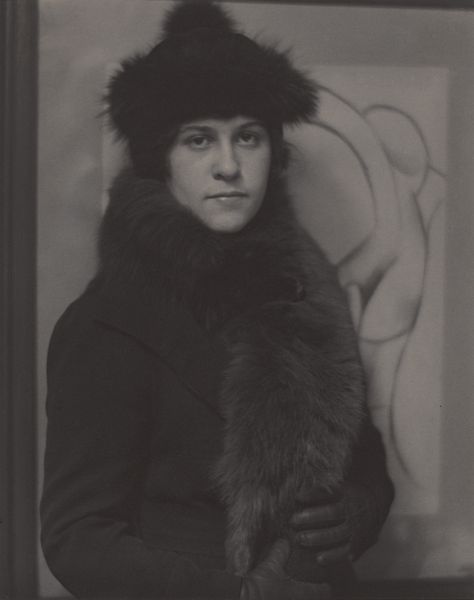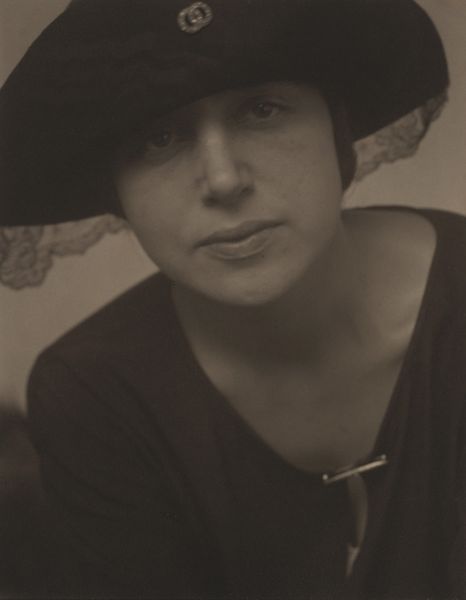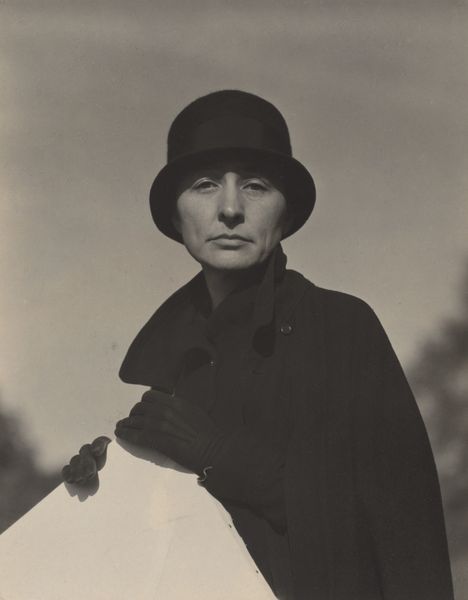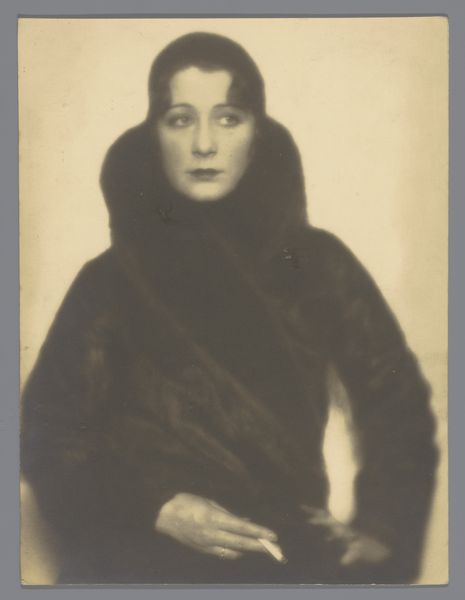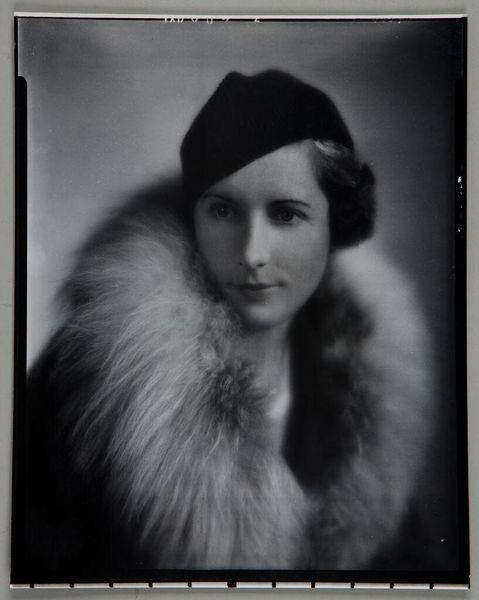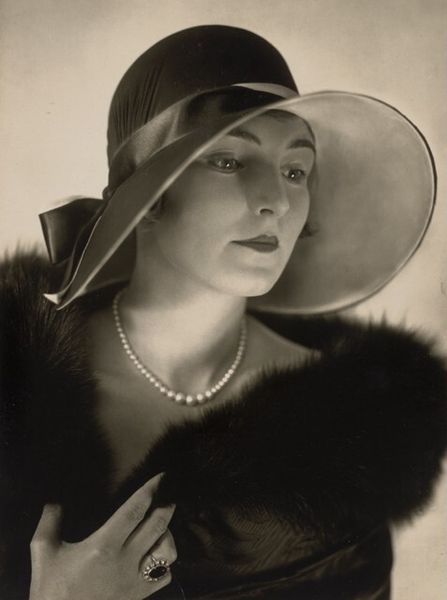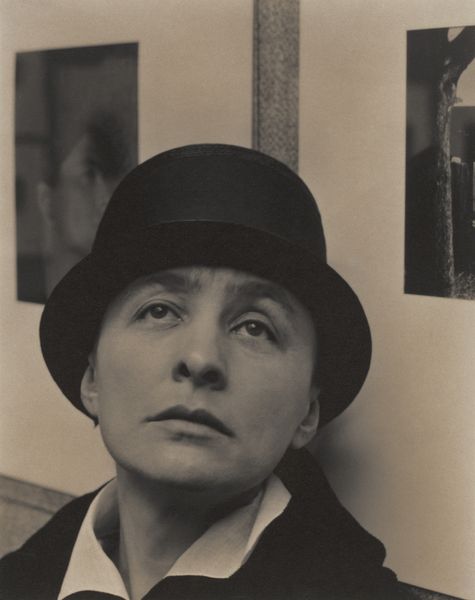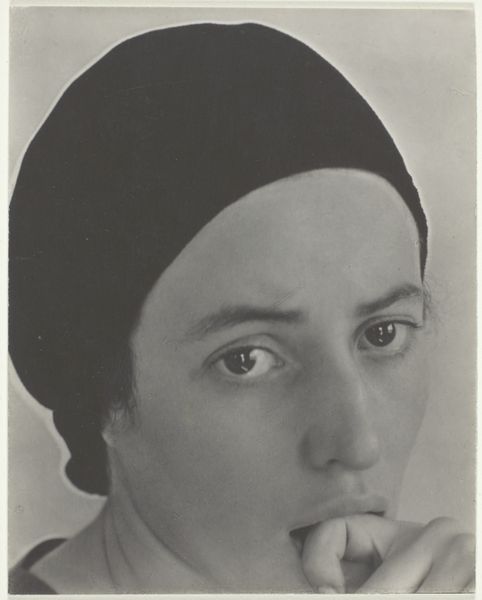
photography
#
portrait
#
black and white photography
#
photography
#
black and white
#
monochrome
#
modernism
#
monochrome
Dimensions: image: 24.3 x 18.8 cm (9 9/16 x 7 3/8 in.) sheet: 25.2 x 20.2 cm (9 15/16 x 7 15/16 in.)
Copyright: National Gallery of Art: CC0 1.0
Curator: Looking at this piece, I immediately think of warmth. Perhaps that's just because of the luxurious fur accessories she's wearing. Editor: It is certainly an opulent display. What we're observing here is Alfred Stieglitz's photographic portrait "Marie Rapp," taken in 1915, during the burgeoning modernist movement. Curator: The monochrome gives it a timeless feel. Stieglitz has always been known for his experiments with photographic processes, so how did this one come together? Editor: Well, during this period, Stieglitz emphasized the photograph's status as an art object in itself, distinct from painting. This image is a product of that philosophy. We have to understand it in the context of its moment in time, when photography was vying for legitimacy within art circles. The controlled monochrome tones certainly suggest careful control of the printing process. Curator: The lack of sharp details draws the eye. Her stare is direct, engaging...almost challenging the viewer. She clearly possesses the bearing and confidence afforded by the material excess. Editor: Absolutely, and that’s something that comes across in the photographic journals and catalogues he published. To that end, let’s consider Rapp's own history – understanding Stieglitz’s New York art world context reveals so much. How the elite cultivated spaces for creativity and what he sought to reveal by presenting it. Curator: I wonder what sort of relationship she had with the labor required to produce those clothes. How did she consider consumption? Those considerations could reveal interesting class perspectives about this art. Editor: Good point. Viewing it that way highlights the social power imbued in these objects. Ultimately, looking at a work like this allows us a portal into considering society and culture. It enables reflection on societal expectations regarding representation. Curator: Exactly, and reflecting on materiality provides us the capacity to truly recognize and dissect power dynamics, wouldn't you agree? Editor: A fitting close for us, I think!
Comments
No comments
Be the first to comment and join the conversation on the ultimate creative platform.
